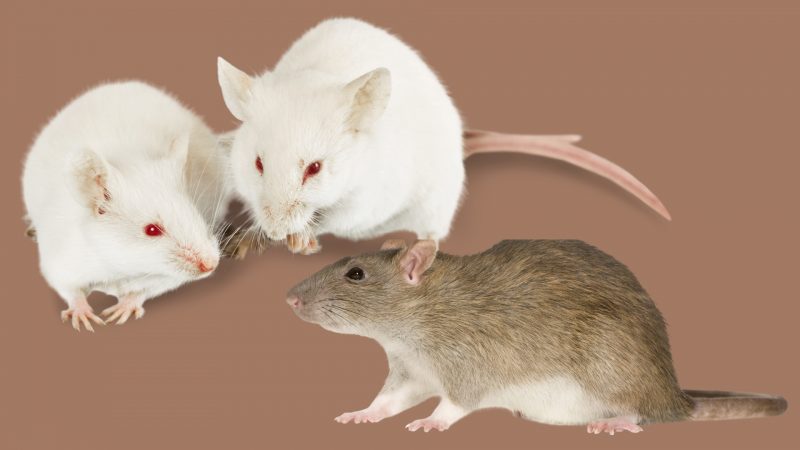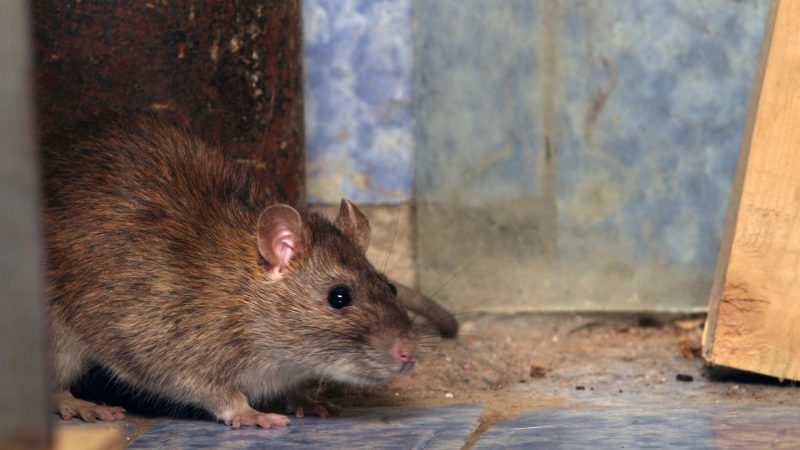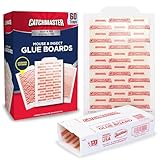Rodents are common household pests present in areas all over the world. Knowing how to differentiate between certain rodents and understanding how to eradicate them will help your home rodent-free.
How to control rodents? Control methods such as traps, rodenticides, and repellents are very effective when used properly. Rats and mice are destructive pests that multiply quickly and are difficult to eliminate. Monitor your home for re-entry signs to prevent them from returning.
To learn more about rodent pest control and prevent rodents like mice and rats from causing damage, keep reading. This guide will cover how to identify rodents, assess rodent infestations, and remove them from your home or property.
What’s a Rodent?

Rodents are a group of gnawing mammals characterized by their lack of canine teeth and perpetually growing incisors. This group contains mice, rats, hamsters, gerbils, squirrels, chipmunks, porcupines, and their ancestors. Around 40% of all known species of mammals belong to the order Rodentia.
What makes rodents so difficult to eradicate is that they must regularly file down their teeth by gnawing on any materials they can find. This makes them very destructive in large groups, as they damage structures, spread disease, and contaminate food and water sources.
Types of Rodents

The order Rodentia is an extremely diverse group of animals. It contains the following species:
- Rats, including brown rats (also known as Norway rats), black rats, and bush rats
- Mice, including the house mouse, deer mouse, and field mouse
- Hamsters
- Gerbils
- Squirrels
- Beavers
- Guinea pigs
- Capybaras
- Groundhogs
- Muskrats
- Prairie dogs, and many more
Rodents widely vary in size, appearance, diet, and behavior, but they all have incisors that must be worn down through gnawing.
Mice vs. Rats: Most Common Pest Rodents

Mice and rats are among the most common rodent pests, and they also tend to be the most destructive in groups. A good rule of thumb is if you can see one rat or mouse, you likely have at least 20 more hiding within your home or other structure.
Although the rodent family contains thousands of species of mice, rats, voles, and more, the most common rat species are brown rats (also known as Norway rats) and black rats (also known as roof rats). The most prevalent mice species are the house mouse, deer mouse, and white-footed mouse.
How to Know if You Have Rats or Mice: Identification Guide
If you are dealing with a rat or mouse infestation, you will be able to notice evidence of rats or mice around your home or building, even if you never actually see one. Be on the lookout for the following signs:
- Rat droppings. Usually, in an infested area, rat droppings will be present around food storage areas, dog and cat food, and water dishes. Droppings are small, usually around ¼ to ½ inch (0.63 – 1.27 cm ) in size, foul-smelling, and pellet-shaped. They are typically the most obvious sign of the presence of rats or mice.
- Bite or chew marks. Chew marks on wood, plastic, cardboard, and other materials are a clear sign of the presence of rodents, typically rats or mice.
- Foul, musky, or rotting odor. Groups of rats and mice can emit a musky, unpleasant smell that only gets worse as the infestation becomes more severe over time. If you notice a distinctly rotting odor, you could have dead mice or rats in hard-to-reach areas.
- Strange behavior from pets. If your home has a rat or mouse infestation, you may notice your dogs or cats barking, clawing, and scratching at walls or crevices. Be aware of where your pets behave strangely, as this is usually where the infestation is centralized.
- Holes in walls or structures. Rats and mice will typically chew holes through walls, pipes, doors, and other structures to create their pathways and points of entry.
- Strange sounds. It is common to hear chewing, gnawing, scratching, or skittering sounds inside your walls and attic when dealing with a rodent infestation. Usually, these sounds will become louder at night.
- Burrows near your home. Rats and mice typically form burrows near gardens or outside of the building they have taken up residence in.
- Tracks and oil stains. Rats and mice will often leave behind tracks as they make their way through a home or building, especially in dusty areas. Their fur is extremely oily, which can stain surfaces and make their tracks more visible.
Another clear sign of infestation, of course, is the visible presence of individual rats or mice. Although rodents tend to avoid high-traffic areas, they are occasionally visible when running from place to place.
As we touched on earlier, if you spot one rat or mouse in your home, you almost definitely have dozens more hiding away within your walls, floors, and cabinets.
Are Rats Worse Than Mice?
Rats are larger and significantly more aggressive than mice, making them generally more difficult pests to contend with. Because of their larger, sharper incisor teeth, rats may potentially do more harm and transmit illness through their painful bite.
Additionally, rats have a more foul and pronounced odor than mice, giving off a musky or even rotting smell in large groups. This is worsened by the fact that they produce larger, more frequent droppings than mice.
However, due to the rats’ much larger size, it is somewhat easier to block off their entry points. Still, most common brown and black rats are perfectly able to squeeze through holes as small as a quarter in diameter. Mice, by comparison, can fit into openings as small as a dime in diameter, making it more difficult to close off entry points.
Both species are highly destructive and should be eradicated as soon as an infestation is determined to prevent further damage to gardens, buildings, and other structures. Rats and mice also both carry disease and can aggravate allergy sufferers’ symptoms in large groups.
How Fast Do Mice and Rats Multiply?
Rats and mice both reach sexual maturity at a very young age (around nine weeks for rats and about six weeks for mice) and produce multiple litters per year. On average, a house mouse can produce up to 10 liters in her lifetime, consisting of around six babies per liter.
Mice usually only live around one to two years in the wild, which slightly hinders their ability to reproduce in large numbers, but 60 babies to one mouse are still substantial.
Rats give birth to around six litters per year, with each litter consisting of 5 to 12 babies. Although not all offspring will grow to reproduce, a rat population can grow from two individuals to over 1,000 within a single year. Notably, rats can live several years, so even a single breeding pair can produce dozens to hundreds of offspring in their lifetime.
Where Do Rodents Live?
Rodents prefer to build warm tunnels by digging or nibbling underground, whether they are found outside or within your home.
Particularly mice and rats are able to build indoor nests in suspended ceilings or attics by cramming through gaps that are a fraction of their size.
Additionally, they look for hiding places in kitchen crevices, wall cavities, crawl areas, boxes, or drawers. Gophers and voles, two common yard pests, make holes on your lawn to gain entry to their tunnel residences.
Rodent Damage and Disease
In addition to our homes, mice and rats can also be found in grocery stores, dining establishments, warehouses, food processing plants, livestock facilities, and agricultural areas. Additionally, they harm our homes by digging and nibbling on them.
Lead covering, concrete block and aluminum roofing, and even concrete are just a few of the things that rodents may chew through to get to a spot. By nibbling on the wiring, rats are said to start fires.
Rodents have been the source of many terrible diseases and epidemics throughout history. Due to the allergens it spreads, which cause asthma and allergic rhinitis, the common house mouse is the most prevalent health pest. The blood of the mouse contains a protein that can cause similar reactions in individuals who are prone to them.
Is Rodent Removal Difficult?

Once a rodent infestation is established, it can be extremely difficult to remove all individuals. Prevention is the best means of controlling rat and mouse infestations.
Since rats and mice breed so quickly and in such a prolific manner, only one breeding pair is necessary to continue producing dozens of offspring, which, in turn, rapidly reach sexual maturity and produce dozens more rats or mice.
Still, even the most difficult infestations may be removed with effort and care, as well as repeated use of rodent control methods such as traps and rodenticides.
How Long Does It Take To Remove Rodents?
While small numbers of rats or mice can be eliminated within one to three weeks, larger populations can take several months or more to get rid of completely.
How long it takes to completely eradicate a rodent population depends almost entirely on the size of the infestation and how long it has been allowed to proliferate.
Rodent Pest Control Methods: A Complete Guide
There are many effective methods of controlling and eliminating rodent populations. The primary two means of rodent removal are traps, such as electrocution and glue traps, and rodenticide poison baits, which are usually either anticoagulants or other acute toxicants.
When it comes to prevention, sealing off entry points, setting up additional traps, removing clutter, and removing food and water sources will prevent rodent populations from re-establishing themselves after eliminating them.
Rat and Mice Control
For rats and mice specifically, the best removal methods are traps and rodenticides of varying builds, styles, and ingredients. Combining these methods and using them throughout an infested structure is the best way to ensure thorough and complete removal.
For prevention, repellents such as oils, light and sound emitters, and spray repellents are all very effective.
Related: What Is the Best Way to Exterminate Rats and Mice? | Tips and Guide
Traps
There are several kinds of traps meant to capture rats and mice and either kill them or immobilize them for safe relocation or humane killing. The most effective and common types include electrocution traps, snap traps, glue traps, and live traps.
1. Electrocution Traps
Traps that use an electric shock to deliver swift, fatal electrocution are now considered the most humane means of eliminating rat and mouse populations. These traps usually consist of a baited tunnel set with a metal plate. When it senses a certain amount of weight, it emits a charge of several thousand volts to kill the rodent trapped inside instantly.
- The Humane Solution: Owltra is the humane solution for getting...
- Quick Zap System: Our unique zap system guarantees 100%...
- Pet Safe Infrared Sensor & Rodent Entrance at the Side: The...
- No Mess Disposal: With magnetic latches, you’ll never have to...
- Convenient Bait Area: Lure rodents in by placing a pea sized...
- The Humane Solution - This two pack OWLTRA in-/outdoor rodent...
- Outdoor Usage with Waterproof Grade IPX4 - OWLTRA OW-7...
- Two Ways of Powering - You can use either 4 D batteries or USB...
- Sound & Light Alarm - Together with the conventional LED alarm, a...
- Convenient Bait Area - Lure rodents in by placing bait at the...
- The humane solution for getting rid of large populations of...
- Outdoor Usage with Waterproof Grade IPX4 - In-/Outdoor Electric...
- Two Ways of Powering - You can use either 4D batteries or USB...
- Sound & Light Alarm - Together with the conventional LED alarm, a...
- Convenient Bait Area - Lure rodents in by placing bait at the...
2. Glue Traps
Although glue traps are effective, they are generally considered inhumane means of killing pests like rats and mice. In addition, these traps are simple and somewhat crude, as they are typically no more than a board covered with very sticky glue on one side.
These traps are designed to be placed in high-traffic areas and baited to attract mice and rats. When the rodents walk on top of the glue-covered board, they become stuck and will either starve to death or die from dehydration unless removed.
- Sturdy & Larger Tray: We design larger and heavier sturdy trays...
- Non-toxic Super Glue: Our mouse traps use super glue that can...
- Easy to Set: Just need to remove the package, unfold the trap,...
- Where to Place: We suggest you position sticky traps along active...
- Wide Application: These large and heavy-duty 5" x 10" trays come...
- READY TO USE: Insect and Mouse glue traps are intended for use...
- YEAR-ROUND CONTROL: Catchmaster glue traps for mice and rats are...
- NO MESS CONVENIENCE: The bulk pack of disposable sticky traps for...
- TOTAL COVERAGE: The glue mouse pad trap can be used indoors in...
- INTELLIGENT PEST MANAGEMENT: At our core, we are dedicated pest...
- READY TO USE: Rat, Mouse and Snake glue traps are intended for...
- YEAR-ROUND PROTECTION: The disposable large mouse pad is ready to...
- HOME & FAMILY PROTECTION: Catchmaster's Glue Traps are designed...
- TOTAL COVERAGE: The mouse traps can be used in residential,...
- INTELLIGENT PEST MANAGEMENT: At our core, we are dedicated pest...
3. Live Traps
These traps are designed to capture a rodent such as a rat or a mouse without killing them. They typically consist of a metal cage with a spring-loaded door that snaps shut and traps the animal when it enters it. For best results, it is recommended to bait the trap to attract the rodents.
These traps are the most humane by far, but the rat or mouse will usually need to be killed anyway to prevent re-infestation.
- 【Suitable Size and Shape】 The humane rat trap cage size:...
- 【Light Weight Galvanized Steel】 Humane rat traps indoor are...
- 【High Sensitive】 All the components in the rodent trap work...
- 【Reusable Rat Traps】 Rat trap cages are not disposable like...
- 【Indoor and Outdoor Use】 Whether you are in the kitchen,...
- 12.5 x 5.5 x 4.5 inches live cage trap, humane way to catch,...
- Larger trigger pedal than similar traps on the market, much more...
- Once the pedal is triggered, the door will be closed instantly...
- Easy to use and clean, reusable for indoors and outdoors
- Not applicable to big squirrels and opossums, since they have...
- Humane and Effective: The trap cage is designed to humanely...
- Easy to Set Up: The trap cage is easy to set up and use. It comes...
- Durable and Reusable: The trap cage is made of high-quality...
- Large Capacity: The trap cage has a large capacity, allowing it...
- Portable and Lightweight: The trap cage is portable and...
Rodenticides
Rodenticides are the other primary means of eradicating rat and mouse populations. It is usually poisoned pellets, blocks, or chunks. Moreover, it should be placed in hard-to-reach areas accessible to mice and rats but not pets or children, as the poisons are highly effective and lethal even to larger animals and humans.
The main two types of rodenticides are anticoagulants, which cause internal bleeding, and acute toxicants, which deliver a fast-acting poison.
- HELP REDUCE MICE PROBLEMS with D-Con Bait, 1 Station plus 18...
- CONTAINS NO neurotoxins or anti-coagulants
- OUR NEWEST BAIT STATION, and is resistant to tampering by...
- COMPACT AND WEATHER-RESISTANT station can be used indoors or...
- IDEAL FOR INDOOR AND OUTDOOR: attic, kitchen/pantry, basement,...
1. Anticoagulants
These rodenticides prevent blood from clotting. This causes the animal that ingests them to bleed internally for several days before eventually perishing. Many different kinds of active ingredients are used in these rodenticides, including warfarin, chlorophacinone, and bromadiolone.
- Anticoagulant bromadialone bait with immediate results
- Moist bait provides high palatability to rodents
- Suitable for when an abundance of food is available for rodents
- Comes in a 16-pound pail
- Single feed, second generation anticoagulant, bromadiolone,...
- Palatable formula with grains and seeds and available in 1 oz...
- For indoor and outdoor control of rats, mice, and other...
- All-weather formulation reduces the risk of ruined bait, while...
- Rats and mice love this peanut flavored poison. This single feed...
- Individual bait blocks in a 9lb bucket. Peanut flavored.
2. Acute Toxicants
Acute Toxicants contain fast-acting poisons to kill a rat or mouse within one to two days. The active ingredients in these rodenticides vary, but bromethalin and zinc phosphide are the most common.
Best Products for Rodent Control
In this section, we’ll cover the most effective and best-reviewed products from Amazon that are used for rodent control in several of the above categories.
1. For electronic rodent killers, products such as the Victor M250S Electronic Mouse Trap are ideal and easy to use. After adding bait to the trap, all that remains is to wait for the indicator light to turn on, signaling a rodent has been captured and swiftly electrocuted.
- Kills mice with humane high-voltage shock
- Kills up to 100 mice per set of four “AA” batteries (not...
- Improved design: easy to bait, easy to clean, no touch disposal
- 100% kill rate: beveled columns trap mice in place
- Indoor use only
2. Although live traps are controversial, the Lulu Home live cage trap is an effective option for capturing rodents as safely and humanely as possible.
- △Easy to install: Mouse trap cage installation is very...
- △Sensitive and effective: Trap hook is short and flat, and once...
- △Long service life: The iron rat trap cage is sturdy and...
- △Rat trap cage Very humane: Grabbing and releasing the mouse...
- △Environmental safety: Safe and reliable mousetrap, non-toxic...
3. As far as rodenticides go, the d-CON refillable bait stations is highly recommended. It is effective in eliminating large populations of rats, mice, and other rodents.
- HELP REDUCE MICE PROBLEMS with D-Con Bait, 1 Station plus 18...
- CONTAINS NO neurotoxins or anti-coagulants
- OUR NEWEST BAIT STATION, and is resistant to tampering by...
- COMPACT AND WEATHER-RESISTANT station can be used indoors or...
- IDEAL FOR INDOOR AND OUTDOOR: attic, kitchen/pantry, basement,...
Actions to Take to Reduce Exposure Rodents in the Home
The easiest approach to avoid coming into touch with rats is to remove any sources of food, water, and anything that serve as refuge for them. Also, use strategy involves rodent-proofing, correct food storage, trapping, and poisoning in addition to environmental cleaning.
The following activities can be taken to lessen rodent exposure:
- Sealed and kept in rodent-proof containers, food and water should always be available. Thick plastic, glass, or metal are used to make rodent-proof containers, which also have tight-fitting lids.
- Garbage should be disposed of frequently and consistently. Put garbage and food scraps in rodent-proof bins if you’re storing them within the house.
- After using, quickly wash all dishes and cooking equipment.
- Dispose of debris and trash as soon as possible. Store woodpiles and stacks of lumber or other materials at least 12 inches above the ground and as far away from the home as possible.
- Remove anything that could be used as a rat nesting place, including rubbish, abandoned automobiles, abandoned tires, and other objects.
- Maintain short grass and trim or eliminate dense bushes and brush that could serve as a hiding place for rats.
- Set up spring-loaded traps in barns and other locations where rodent activity is visible. Keep kids and pets away from spring traps when playing.
How to Remove Dead Rodents or Clean Up Rodent-Contaminated Areas?
To lessen the risk of contracting illnesses, thoroughly clean any areas where there are indications of rodent activity. Sweep or vacuuming up droppings, urine, or nesting materials should never mix up dirt when cleaning.
Cleaning of Contaminated Surfaces
- If the surfaces haven’t been cleansed, avoid vacuuming or sweeping any rodent waste.
- If handling dead rats, traps, or rodent waste is necessary, put on rubber or plastic gloves.
- Spray a disinfectant or a 1:10 chlorine solution. This includes the 1 1/12 cups of household bleach mixed with 1 gallon of water. Use this over rodent urine or droppings until they are completely saturated. Give it five minutes to soak.
- The urine and the droppings can be collected with a paper towel and disposed of outside in a closed garbage can. Clean any potential contaminated items with disinfectant once the rodent waste and urine have been removed.
Cleaning of Dead Rodents
- Using a 1:10 chlorine solution. This includes 1 1/2 cups of household bleach diluted with 1 gallon of water or a disinfectant, then spray deceased rodents.
- Put on some plastic or rubber gloves.
- Either remove the rat from the trap by raising the spring-loaded metal bar and letting it fall into a plastic bag before sealing the bag. You can also put the complete trap with the dead rodent inside a bag before sealing the bag.
- After the final rodent is captured, keep setting traps for at least a week.
- If rodents are still an issue, you might want to get assistance from a qualified pest control specialist.
Rodent Prevention: Mouse and Rat Repellent
Repellents are another great way to prevent further infestations from occurring by keeping rats and mice away from your home or business.
The main two types of repellents used for mice and rats include spray repellents such as the Bobbex Animal Repellent Spray and electronic repellents that emit high-frequency sounds and lights like the Loraffe Plug-In Rodent Repellent from Amazon.
By either giving off unpleasant sounds, scents, or flashing lights, these products deter mice and rats from entering and destroying structures and breeding within them.
These repellents are very popular as they are the most humane means of preventing rodent infestations. However, their effectiveness can vary depending on whether or not an infestation has already been established.
Are Rodent Exterminators Expensive?
When hiring a rodent exterminator, the price will vary depending on their experience and the severity of your infestation. However, you can generally expect to pay anywhere from $200 to as much as $1,000 or more for their services.
If all else fails when addressing a rodent infestation, it may be best to hire an expert rodent exterminator to assess and manage your rat or mouse population. Although rodent exterminators can be expensive, the help of a professional can be very effective for more severe infestations.
List of Sources
Rodent Control After a Disaster. (2012). Centers for Disease Control and Prevention.
Timm, R. M., Salmon, T. P., Marsh, R. E. (2011). Rats. University of California Agriculture & Natural Resources.
Rodents. (2021). National Pesticide Information Center.
- Bed Bug Surge 2025: How to Detect, Prevent, and Safely Eliminate Infestations in Top U.S. Cities - June 18, 2025
- Asian Needle Ants Invade US Homes: 2025 Guide to Identification, Risks, and Effective Control - June 11, 2025
- New World Screwworm Alert: How US Livestock Owners Can Prevent Outbreaks and Protect Herds [Summer 2025 Update] - June 8, 2025















